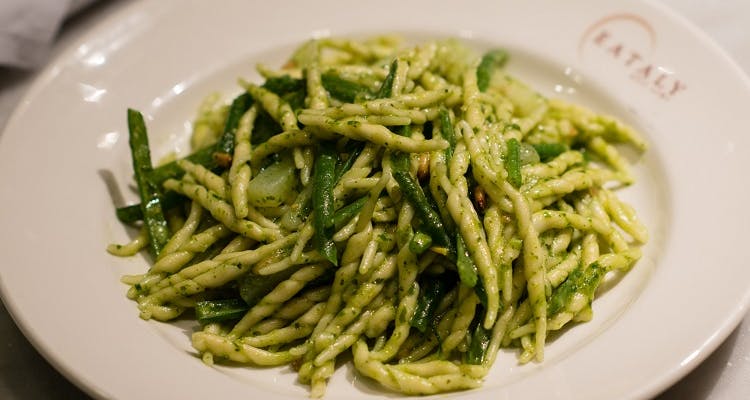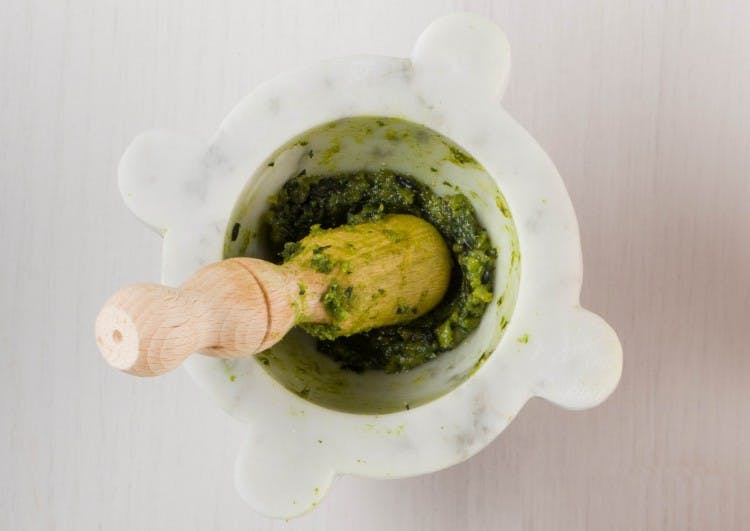At Eataly, we love to explore the unique cuisine and culture of Italy's 20 regions, each of which yields an abundance of delicious food and drink. The northern coastal region Liguria is especially celebrated for its light, herb-heavy dishes. One of our favorite regional dishes is the famed trofie al pesto: pesto pasta.
Pesto is derived from the Italian verb pestare, to grind or crush. Created in the port city Genova, true pesto genovese is comprised of freshly-ground basil under the certification genovese DOP (Denominazione Origine Protetta, or protected designation of origin), Ligurian extra virgin olive oil, pine nuts, sea salt, and garlic. Many varieties also include Parmigiano Reggiano and Fiore Sardo (because you can never go wrong by adding cheese).
When preparing the perfect plate of pasta, our chefs at Eataly remind us that the pasta should “marry” the sauce. The shape, size, and texture of each type of pasta interact differently with various sauces. Pesto’s match made in pasta heaven is trofie, a twisted, spiral-shaped pasta that is also native to Liguria. The ribbed spirals perfectly pick up pesto's fine consistency, resulting in perfect bite after perfect bite, each guaranteed to transport you to the Ligurian seaside.

Difficulty
Easy
Serves
4 people
Trofie al Pesto(Pesto Pasta)
Recipe courtesy of Eataly
1 six-ounce jar basil pesto, such as Roi or Niasca Portofino (about 3/4 cup)
1 pound trofie pasta, such as Pisani or Alta Valle Scrivia
6 small red potatoes, boiled and halved
1 cup young green beans
Sea salt, to taste
Extra virgin olive oil, to taste
Bring a large pot of water to boil, then season it with salt until it is as salty as the sea. Set up a large bowl filled with ice water nearby. Drop the green beans into the boiling water until they turn bright green, about 1 to 2 minutes. Move them from the boiling water to the ice bath. Once cool, drain and dry the blanched green beans.
Place the pesto, boiled potatoes, and blanched beans in a 12- to 14-inch saute pan, and set aside.
Bring 6 quarts of water to a boil, and add two tablespoons of salt. Cook the pasta in the boiling water until it isal dente, then drain, reserving 1 cup of the pasta's cooking water.
Add the pasta to the pesto in the saute pan but donotplace over heat. Toss to combine, and add a drizzle of extra virgin olive oil. If needed, add a small amount of the pasta cooking water to thin the pesto.
When the pasta is completely combined with the pesto and vegetables, place the dish into a warmed serving dish, and serve.

Buon appetito!